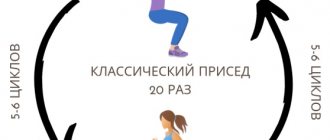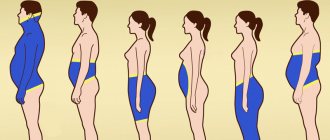What is physical activity ratio?
Physical activity coefficient is a value equal to the ratio of a person’s energy expenditure during activity to expenditure at rest (the value of basal energy metabolism).
The value of the physical activity coefficient is always higher than one and can vary from 1.4 to 2.4. Values of 2.4-4.5 and higher can be observed in athletes during intense training or competitions and are temporary, periodic in nature.
Values below 1.4 (in the range of 1.2-1.3) occur when a person is bedridden due to age or illness, but even in this case, to determine the energy value of the diet, it is necessary to take into account the damage factor, temperature factor, the presence of protein-energy deficiency.
Physical activity coefficient is a value showing the ratio of a person’s energy expenditure during activity to energy expenditure at rest.
How to determine the physical activity ratio?
To determine the coefficient of physical activity, there are tables that show the coefficient of each type of physical activity per unit of time.
The problem is that throughout the day, different types of activities continuously replace each other. How can you find out your coefficient?
To do this, with varying degrees of error, you can use the data given below.
Dependence of CFA on everyday life
The dependence of CFA on lifestyle allows us to determine what needs to be changed to improve the quality of life. With passive rest near the TV, sedentary work in the office, without long walks, the indicator will be low. Therefore, how a person spends most of the day determines his physical activity rate.
If a person has a hard physical job, or is involved in professional sports with regular training, then his coefficient will be much higher. Therefore, to maintain health, it is necessary to maintain a balance between exercise and rest. A prolonged increase in CFA exhausts a person physically and psychologically. A constantly low ratio contributes to the degradation of muscle mass and weight gain.

The benefits of active recreation
Active rest is the continuation of intense physical activity with a change in its type. This form of leisure is preferable for people whose work activities involve limited physical activity.
The stricter these restrictions are, the more a person needs active rest, which is, essentially, compensation for forced immobility during the working day.
On a note:
People whose work limits physical activity during the day need an active form of rest.
Of course, active recreation cannot always replace passive recreation (for example, reading books or doing creative work is a useful and necessary form of recreation). But you may well prefer walking or doing yoga to watching “endless” TV series or “deep immersion” in social networks.
On a note:
If you want to watch a movie, go to the cinema.
Just go, outline a walking route of 2-3 kilometers and walk them before and after the session. The ability to walk for a long time and quickly is determined not only by physical fitness, but also by appropriate equipment, and in order for your walk to be useful and enjoyable, you first need comfortable shoes.
If the weather is not conducive to walking, then you can start cleaning - this will increase energy costs by 60%. Working in the garden or playing outdoor games with children gives an even greater effect.
Determination of calorie norm
To determine the number of calories the body needs, you can use the formula:
K (cal) * weight (kg),
where K is a fixed value required per 1 kilogram of weight.
Women with a slow metabolism require 31 kcal, with an active one - 33 kcal. For men, the indicators are different. With a slow metabolism - 33 kcal, with a good one - 35 kcal. During active physical activity, women can add 30% to the K coefficient, men 50%.
What is energy balance? And when will I lose weight?
Energy balance is the difference between the energy entering the body and the energy expended by the body.
Equilibrium in the energy balance is when the energy supplied to the body with food is equal to the energy expended by the body. In this situation, the weight remains stable. Accordingly, a positive energy balance is when the energy received from consumed food is greater than the energy needed for the body’s functioning. In a state of positive energy balance, a person gains extra pounds.
A negative energy balance is when less energy is received than the body expends. To lose weight you need to create a negative energy balance.
WHO recommendations
The WHO recommendations contain four key terms:
- intensity;
- degree of intensity;
- level of physical activity;
- age groups.
Intensity
The intensity of physical activity is the pace of movement or the amount of effort.
In other words, how much effort a person expends when performing a particular movement. Walking on a flat road or running uphill.
Intensity level
The degree of intensity is measured in "MET".
MET is the metabolic equivalent. It shows how many calories a person needs per day, depending on activity.
According to WHO, at rest, 1 kilocalorie is burned for every kilogram of weight in 1 hour.
Let's look at an example. The man weighs 60 kg. While the hero is sleeping, 60 kilocalories are burned every hour. Once you start moving, energy costs will increase.
The level of energy expenditure is the level of physical activity.
Physical activity levels
The resting state is equal to 1 (one) MET. Physical activity, according to WHO calculations, has three levels.
- 1-3 MET – low level;
- 3-6 MET – moderate degree of activity;
- ˃ 6 MET – high level.
Let's give examples.
Low level of physical activity
Low levels of physical activity include computer work and a sedentary lifestyle. When a person watches TV or lies down reading, playing cards or embroidering, calories “go away” slowly. Energy costs range from 1 to 3 MET.
Normal (moderate) level
A moderate level of physical activity is the normal, daily activity of an active person.
- Walking at a medium pace.
- Games with children; gardening or housework .
- A ride on the bicycle.
- Dancing, hoop, skating.
Play football with your child. Go to the pool or to the river. With such a load, the heart rate increases. Calorie expenditure increases from 3 to 6 per kilogram of weight (3-6 MET).
High level of physical activity
A high level of physical activity involves heavy physical work or intense sports activities.
Long distance running, sprinting or strength training will speed up your metabolism. Energy consumption will be from 6 MET. That is, for every kilogram of your own weight, more than 6 kcal will be burned.
Age groups
WHO recommends calculating physical activity levels for three age groups.
- 5 – 17 years
- 18 – 64 years
- Over 65 years old.
Physical activity of school-age children
Normal physical activity for a child is daily moderate to vigorous intensity exercise.
Children from 5 to 17 years old should perform exercises every day to develop the cardiovascular system. First of all, these are aerobic exercises and active games.
Do exercises to strengthen muscles and bone tissue at least 3 times a week. Running, push-ups, pull-ups, etc.
The total duration of physical activity for school-age children is at least 60 minutes per day. WHO proposes the concept of gradually increasing the load for the child. The bottom line is this.
The child performs moderate-intensity exercises twice a day. The duration of one lesson is at least 30 minutes. Gradually, the training time is increased. Add high-intensity exercise and resistance exercises (weight lifting). Such activities increase the mineral content of bone tissue and increase bone density.
Physical activity of an adult
Adults, ages 18–64, should do moderate to vigorous intensity exercise. Number of classes – up to five days a week. The total duration is from 150 to 300 minutes per week.
Over 65 years old. For this age category, the norm would be to perform moderate-intensity exercises from 10 to 30 minutes a day.
Which is remarkable. The number of calories a person needs per day changes with age. other age groups to calculate calorie intake .
CFA calculation
The physical activity rate is calculated based on the type and duration of activity that a person engages in during the day. If a person did the same thing throughout the day, his CFA would always be the same. But vigorous activity is replaced by sleep, food and quiet rest, which means that at certain points in time the coefficient will be different.
The calculation of the physical activity coefficient is carried out by determining what a person does and for how long. For example, sleep is 8 hours, the CFA is equal to 1, therefore, the total coefficient will be equal to 8*1=8. Running at a speed of 12 km/h gives a CFA of 10. To find the overall coefficient when running for 30 minutes, you need 10 * 0.5 = 5. In this way, all 24 hours a day are calculated. The total coefficient for the day is summed up. If the total CFA is 45.9, then it must be divided by 24. 45.9/24 = 1.91 is the formula for the physical activity coefficient.

Instant CFA can be in the range from 1 to 300. It should be taken into account: the more effort spent, the less time that can be spent on it. One powerful jerk with a coefficient of 300 in duration will take 0.1 seconds. With moderate work with an indicator of 5, a person is able to work throughout the day.
The average coefficient during the day is much less than the instantaneous one. A person needs rest to regain strength.
How to calculate basal metabolic rate?

Basic (basic) metabolism is the amount of energy that a person needs for life in a calm state in comfortable conditions.
This indicator depends on the gender, age, height and weight of the person. It is known that in youth the metabolic rate is higher than in more mature and old age. And men have a higher metabolic rate than women. Therefore, the formula for calculating basal metabolic rate will be different for both sexes.
In dietetics, the most common formula for calculating basal metabolism is the Mifflin-San Geor formula. This is what we advise our students to use at the Lara Serebryanskaya School of Dietetics. She looks like this:
| Mifflin-St. Geor Formula For women: BOO = 9.99*weight (kg) + 6.25*height (cm) – 4.92*age (year) – 161 For men: BOO = 9.99*weight (kg) + 6.25 *height (cm) -4.92 *age (year) + 5 |
Relationship between CFA and health
Chronic diseases are more common in people with a low level of physical activity factor than in people with an average level of physical activity factor. The fact is that to maintain good condition you need to move. Excess weight provokes diseases such as hypertension and diabetes. Obesity puts a strain on the cardiovascular system. With improper metabolism and lack of physical activity, the risk of increasing cholesterol levels increases several times. Constant fluctuations in weight affect your health, so it is important to maintain CFA at a sufficient level to avoid weight gain.











